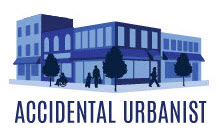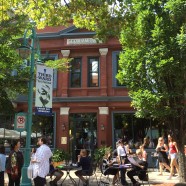Want Community? Build Walkability
Lately, I’ve been thinking about how our cities shape our habits and our lives.
Prioritize car travel and parking lots, and you get places where everybody drives. Build places where it’s delightful to walk, and pedestrians magically appear. Make it safe to bike, and cyclists come out of the woodwork.
Drop me in any location—like the “Street View” guy from Google Maps—and I can instantly tell if it’s a good place for people.
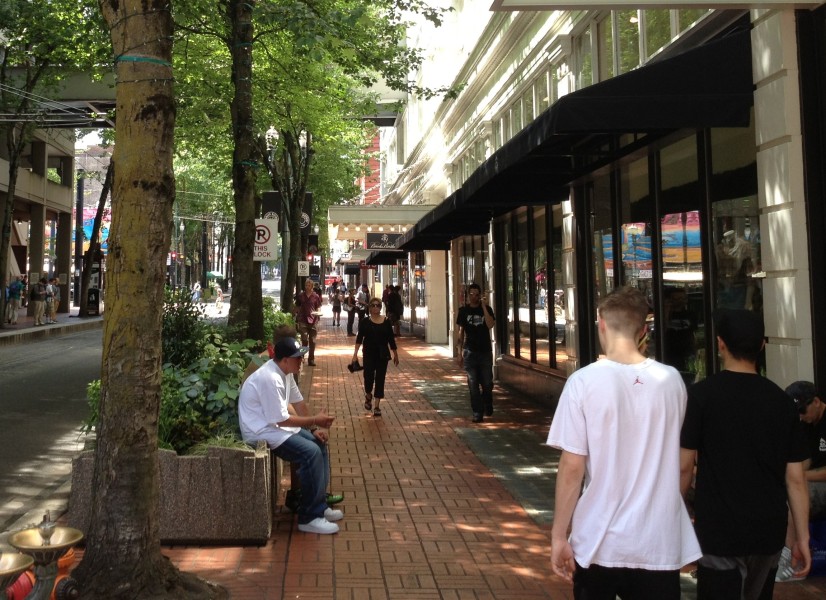
Are the streets narrow enough that drivers slow down and folks feel comfortable on foot? Are the buildings built up to the sidewalk, where pedestrians and transit users can access storefronts without coming into conflict with cars? Is the streetscape interesting to humans, providing a diversity of options and opportunities to explore? Do buildings have sufficient windows to breathe life into the street—allowing people on the outside to see in, and people on the inside to see out?
These are just a few of the variables that make places rich and inviting to people. And for the most part, we quit building them about 70 years ago. Not because people suddenly didn’t want to walk, bike and use transit. We basically regulated walkability out of our cities and towns.
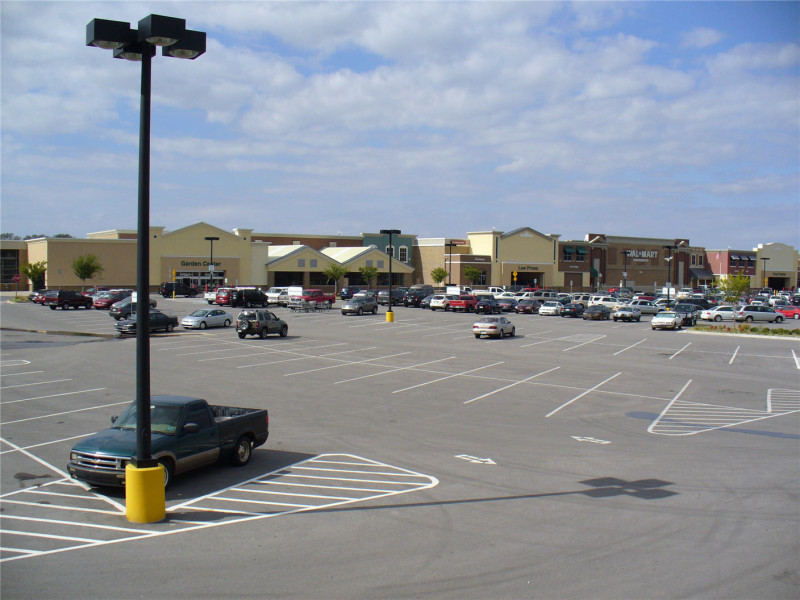
Municipal zoning ordinances separated commercial uses from residential ones, and enshrined car-oriented design at the local level. Transportation engineering standards transformed our city streets into high-speed stroads. Meanwhile, changes to lending practices and federal mortgage insurance regulations made it easy and cheap to get a loan on a single-family home in the suburbs, while making it significantly harder to finance mixed-use buildings in the urban core.
We pay for these mistakes with our bodies, as decades of car-centric design have transformed us from active humans into motorists reliant on machines for movement. But our communities also pay a price, as people who drive are more isolated and detached from the cities they call home.
I don’t mean to knock people who drive. (I live in a city where driving is often the only practical choice.) I simply mean that when you walk or bike, you experience your hometown in a much more intimate way.
NEIGHBORHOODS NEED EYES (AND EARS) ON THE STREET
A few weeks ago, while biking home from work, I was enjoying a long downhill stretch of road late on a Tuesday night. Catching all the green lights is a beautiful thing for a cyclist, and I was pedaling fast.
The sound of breaking glass stopped me.
I braked sharply and circled back, listening and looking for the source of the sound. Unfortunately, it appeared to be coming from the vacant Tulsa Club building, an art deco masterpiece that has suffered from decades of neglect and damage inflicted by vandals, fire, and an absentee slumlord. After many years and several false starts, it’s finally under new ownership and everyone in the community hopes this historic icon can return to its former glory.
Which is why it really ticked me off when I heard a second crash. Someone was either breaking in, or breaking windows for fun.
Without a moment’s hesitation, I was off my bike and yelling at them to stop.
I called the cops, and shined my bike light into the dark passageway between buildings while waiting for them to arrive. When the police showed up, I got back on my bike and headed home. But I kept thinking about what had happened.
If I’d been in my car, I never would have heard a sound. I wouldn’t have stopped, because I wouldn’t have known anything was wrong.
MORE THAN ONE WAY TO GAUGE A COMMUNITY’S HEALTH
When we talk about healthy communities, we often talk about economic prosperity, access to fresh produce, or chronic disease among populations.
But there’s more than one way to gauge a community’s health, and it’s not about dollars or waistlines or longevity statistics. It’s about engaging in your community and being a part of the world around you.
Every time I walk or bike, I enter into this world on a much deeper level.
When I bike to work, I speak to strangers. People say hello. They ask directions. They comment on the weather. At a minimum, I get eye contact and a wave. More often than not, people smile.
Over time, you start to recognize people: The doormen at the downtown hotel. The folks at the bus stop. The kids on bikes delivering sandwiches to office workers. The crossing guard at the elementary school. The homeless guy soaking in the sun on a warm winter day.
As people start to recognize you, the smiles get bigger, and the hellos get friendlier. You start to feel that we’re all in this thing together. Every time it happens, it makes my day. Every time, I feel a part of something bigger and better than myself. Maybe that’s the definition of community.
TRADITIONAL BUILDING PATTERNS BRING PEOPLE TOGETHER
Two things are at play here. One, I’m on my bike. I’m recognizable as a human being. I’m not encased in a soundproof bubble of glass and steel.
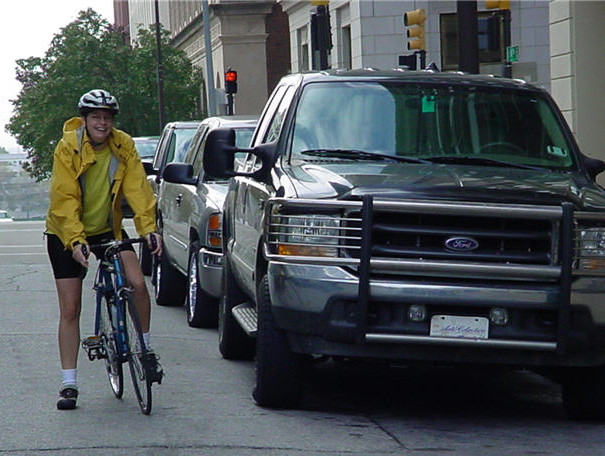
Two, my route to work takes me through older neighborhoods into the heart of downtown. I pass homes and schools and offices and shops, all of which are easily visible from the street. Houses and storefronts are built closer to the street, and there are a lot more people on foot. We’re close enough to recognize each other, and it’s possible to speak.
I rarely bike through places where single-use buildings are fronted by giant parking lots. If I did, I wouldn’t interact with nearly as many people. In these places, I would only interact with cars—which is a lot more dangerous for cyclists and a lot less fun.
But the way we build our cities impacts more than just cyclists. Over the years, I’ve come to believe that older, more traditional development patterns are actually safer and better for everyone.
When buildings “face” the street and meet the sidewalk, not only does it put “eyes on the street,” but walkable places create more opportunities for people to meet, to speak, and to care about each other.
When houses have front porches instead of backyard decks, people are more likely to know their neighbors, at least by sight, and they will notice if anything unusual is happening in the vicinity.
When people live above commercial spaces in mixed-use buildings, they “activate” the space both night and day. The area never feels abandoned, because people are always around.
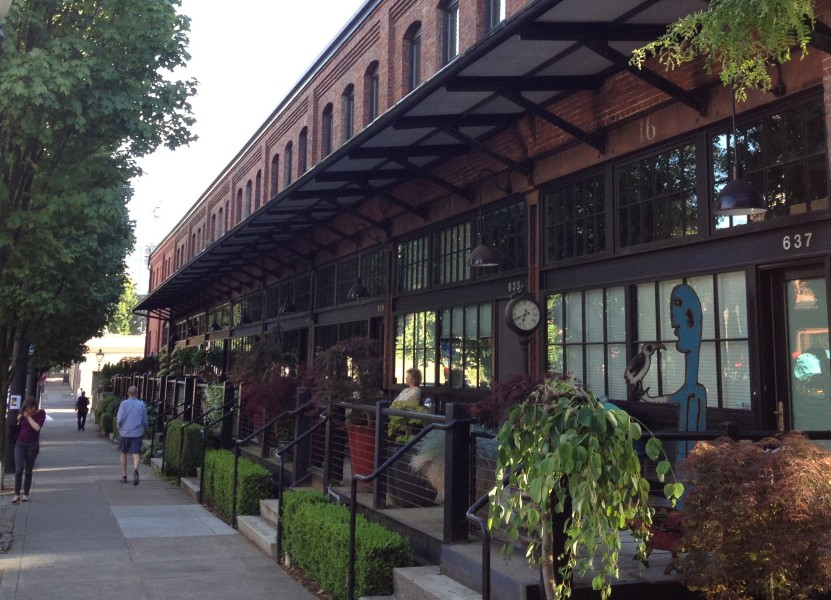
CONTRAST THIS WITH THE SUBURBAN MODEL
In a typical suburban neighborhood, people enter their vehicles within the protective shroud of their garage. They drive to their destinations without speaking to anyone who’s not already on speed dial. They park in enormous parking lots, where they may see other humans, but their main focus is avoiding being run over by an SUV. Later, they return home, where the garage door closes behind them like the drawbridge of a medieval castle. Outdoor activities take place behind privacy fences, and yards are so large that people who can afford to pay others to mow the lawn for them. Neighbors rarely have occasion to speak, and often don’t even know each other’s names.
This doesn’t sound like the American dream to me.
When we stopped building traditional, walkable places, we lost something important: the chance to have routine, face-to-face contact with strangers; and the opportunity to see and know and learn from people who are not exactly like us. In addition, we’ve decimated the kinds of neighborhoods in which people can easily look after each other.
What we’ve done is not good for our communities. It’s probably bad for our souls, too.
I can’t help but believe that our neighborhoods, our cities, and our commitment to each other would improve if more of us lived in places where “bumping into someone on the street” doesn’t involve heavy traffic and a fender bender.
To get there, changes are needed. We need to fix our zoning codes to enable traditional mixed-use neighborhoods. We need to challenge our transportation policies and stop prioritizing car travel over all other modes. And we need to eliminate the regulatory obstacles that make it difficult to obtain financing for renovation or construction of small, mixed-use buildings in walkable neighborhoods.
Cities evolve. We create our future one building at a time. So there’s no time like the present to start building–and rebuilding–places that are great for people and communities (again).
Read More